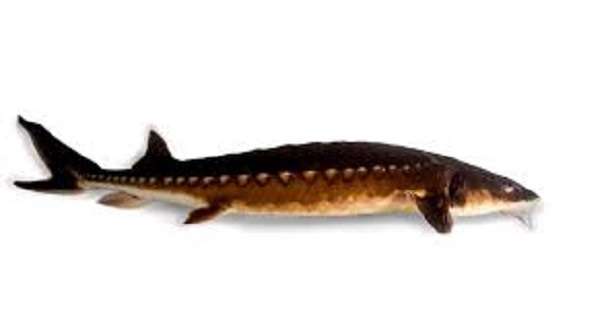SCORES & OUTDOORS: Shortnosed sturgeons lurk in the Kennebec River
 by Roland D. Hallee
by Roland D. Hallee
If you’ve ever fished the Kennebec River, you will know that many species of fish inhabit its waters. From striped bass, large and smallmouth bass, and blue fish, to Atlantic salmon, and bait fish such as alewives and American shad. But did you know that there is another denizen of the deep lurking in those waters? It is the shortnosed sturgeon. And they are endangered.
The term sturgeon includes over 20 species commonly referred to as sturgeon and several closely related species that have distinct common names.
One of the oldest families of bony fish in existence, sturgeon are native to subtropical, temperate and sub-Arctic rivers, lakes and coastlines of Eurasia and North America. Sturgeons ranging from 7 to 12 feet in length are common, and some species grow up to 18 feet. Most sturgeons are anadromous bottom-feeders, spawning upstream and feeding in river deltas and estuaries. While some are entirely freshwater, very few venture into the open ocean beyond near coastal areas.
Several species of sturgeons are harvested for their roe, which is made into caviar, a luxury good which makes some sturgeons pound for pound the most valuable of all harvested fish. Because they are slow-growing and mature very late in life, they are particularly vulnerable to exploitation and to other threats, including pollution and habitat fragmentation. Most species of sturgeons are currently listed as endangered, or critically endangered.
Sturgeons and related paddlefish appeared in the fossil record approximately 200 million years ago, making them among the most ancient of fishes. In that time, they have undergone remarkably little change, indicating that their evolution has been exceptionally slow and earning them informal status as living fossils. This is explained in part by the long inter-generation time, tolerance for wide ranges of temperature and salinity, lack of predators due to size, and the abundance of prey items in the benthic (on the bottom) environment.
They are primarily bottom feeders. With their projecting wedge-shaped snout they stir up the soft bottom, and use the barbels to detect shells, crustaceans and small fish, on which they feed. Having no teeth, they are unable to seize prey, though larger specimens can swallow very large prey items, including whole salmon.
I remember one time when I was salt smelting with a friend in Dresden on the Kennebec River. The night was cold and many of the smelt shacks had their doors closed. But the silence was broken when someone in another shack came running out the door, yelling “shark!” He had hooked into a sturgeon, and upon seeing the snout and vertical tail, thought he had landed a shark. We had a good laugh about that one, and continue to talk about it to this day.
In June 2004, the Federal Energy Regulatory Commission gave the go ahead for a project on the Penobscot River to restore 11 species of migratory fish to the watershed. One of those specimens was the shortnosed sturgeon. The plan was to purchase and decommission three dams on the river – removing two of them and building a bypass around the third. Shortnose and Atlantic sturgeon are among the oldest creatures living in the Penobscot River.
If you ever want to get a look at sturgeons, a good place to start is at the public boat landing off Water Street in Waterville. Sometimes, when trolling under the Carter Memorial Bridge for bass or striped bass, you might see a sturgeon, between the Taconnet Dam and the rapids to the south. Some rather large sturgeons have been sighted in that area. Remember, though, they are endangered, and it is unlawful to take, catch, possess, or destroy any shortnose or Atlantic sturgeon from the waters of Maine.
Roland’s trivia question of the week:
The Boston Red Sox have won nine World Series, tied with the A’s. Only two other teams have more. Who are they?
Responsible journalism is hard work!
It is also expensive!
If you enjoy reading The Town Line and the good news we bring you each week, would you consider a donation to help us continue the work we’re doing?
The Town Line is a 501(c)(3) nonprofit private foundation, and all donations are tax deductible under the Internal Revenue Service code.
To help, please visit our online donation page or mail a check payable to The Town Line, PO Box 89, South China, ME 04358. Your contribution is appreciated!



Leave a Reply
Want to join the discussion?Feel free to contribute!